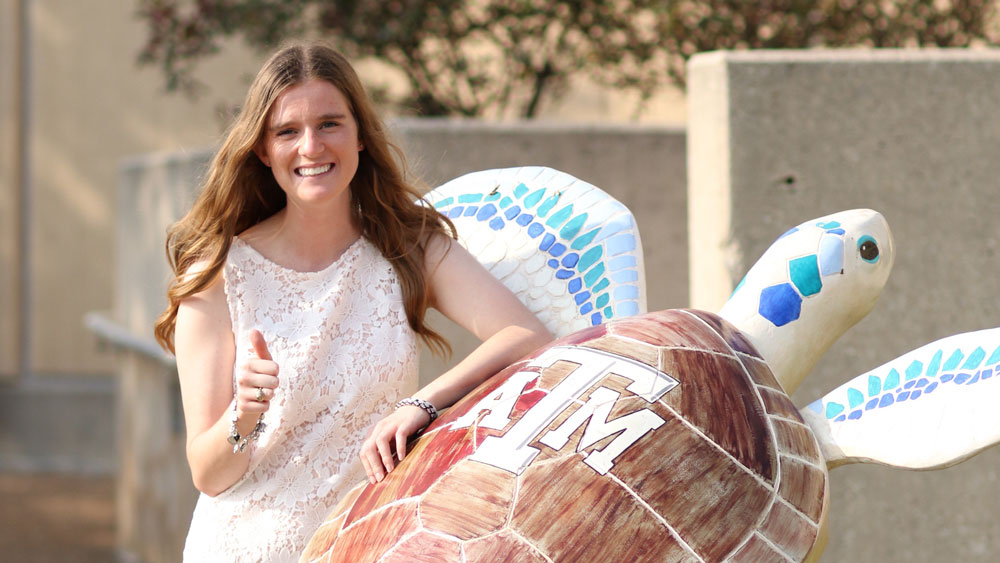
Jaclynn Turnbaugh, a graduate student in the Department of Ocean Engineering at Texas A&M University at Galveston, jokes that she always preferred to play with the sand more than swim in the ocean. Now, she gets to play with sand every day in the name of science, and it’s a dream come true.
Coastal engineering and professionally playing with sand is a reoccurring theme for Turnbaugh’s time in the department. From her first internship with HDR in Corpus Christi to her two-week National Science Foundation Partnerships for International Research and Education (NSF PIRE) Coastal Flood Risk Reduction Program research trip to the Netherlands, the concept seemed to follow her.
“The PIRE experience was amazing because that's what led me to the decision that coastal engineering is what I wanted to pursue,” she said. “I had the opportunity to look at hybrid coastal structures that implemented the hard engineering of concrete, as well as soft engineering of the sand and the natural environment. That, combined with my first internship, really validated what I wanted to do.”
Working with faculty advisor Dr. Jens Figlus and collaborators in the Department of Marine Biology, Turnbaugh is investigating a multidisciplinary way to prevent coastal erosion.
Their research focuses on using beach sand and naturally occurring bacteria to generate a biochemical reaction that binds sand grains together through calcite formation at particle-particle contacts. This process is referred to as Microbial Induced Calcium Carbonate Precipitation, or MICP, and could be a more natural way to prevent beach erosion.
“Seawalls interrupt the natural flow of sediment,” Turnbaugh said. “There is usually a larger amount of erosion that takes place on either end of seawalls. Research like this has been used previously in sand dunes, but now we want to see if it can be applied in a hydrodynamic setting as well.”
As she explained, this project is still in the feasibility phase, and there hasn’t been much field application for this type of research. In a lab setting, everything is controlled and ideal. While the actual environmental uncertainties of the coast (such as rain, seawater levels, etc.) have made it challenging for the team, Turnbaugh finds the problem-solving nature of being on the forefront of pioneering technology exciting.
“It’s been exciting to jump right in and gain hands-on knowledge so quickly,” she said.